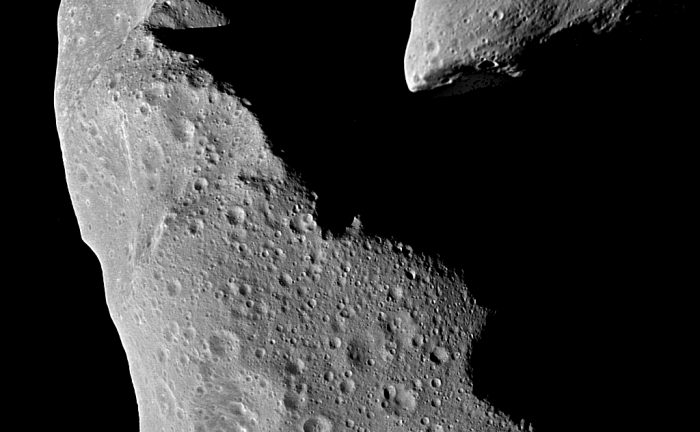
Earlier in its history, the second planet from the sun may have had a liquid water ocean and temperatures suitable for life, a new study shows.

Saturn's exotic moon Titan, with its thick atmosphere and large, methane lakes, continues to beguile planetary scientists. Now, using data collected by an altimeter aboard NASA's Cassini spacecraft, scientists have found liquid methane flowing through deep gorges on the moon's surface.

Using the Pan-STARRS telescope in Hawaii, astronomers detected a mysterious trans-Neptunian object (TNO) moving backwards around the sun.

The new data indicates that while Ceres, which is the largest body in the asteroid belt, was once warm enough for water to have shifted internally, those temperatures were never high enough for an iron core to separate from the rest of the dwarf planet's interior.

Mineral veins found in Mars's Gale Crater were formed by the evaporation of ancient Martian lakes, a new study has shown.

Researchers list exoplanets with the most potential to have liquid water, or even life. An international team of researchers has pinpointed which of the more than 4,000 exoplanets discovered by NASA

Scientists have uncovered a chemical trail that suggests prebiotic conditions may exist on Saturn's largest moon Titan. This moon features terrain with Earthlike attributes.

While orbiting the sun, NASA's STEREO-A spacecraft has taken a look back at Earth, to also find Mars and Pluto in shot.

New images confirm the presence of a dark vortex on Neptune. Though similar features were seen during the Voyager 2 flyby of NASA

A modeling paper published this week in Geophysical Research Letters offers a simple but fascinating explanation: partial freezing within a subsurface, liquid water ocean.

Earth has a new dance partner, a quasi-moon named 2016 H03.

Using the upgraded Very Large Array, astronomers have produced a detailed radio map of the upper 100 kilometers of Jupiter

Two large meteorites hitting the planet millions of years apart triggered a pair of mega-tsunamis. These gigantic waves forever scarred the Martian landscape and yielded evidence of cold, salty oceans conducive to sustaining life.

A small water jet on the icy moon spews its fiercest eruptions when the moon is farthest from the planet, but overall gas output hardly increases.

NASA's MESSENGER mission has unveiled the first global digital elevation model (DEM) of Mercury, revealing in stunning detail the topography across the entire innermost planet and paving the way for scientists to fully characterize Mercury's geologic history.